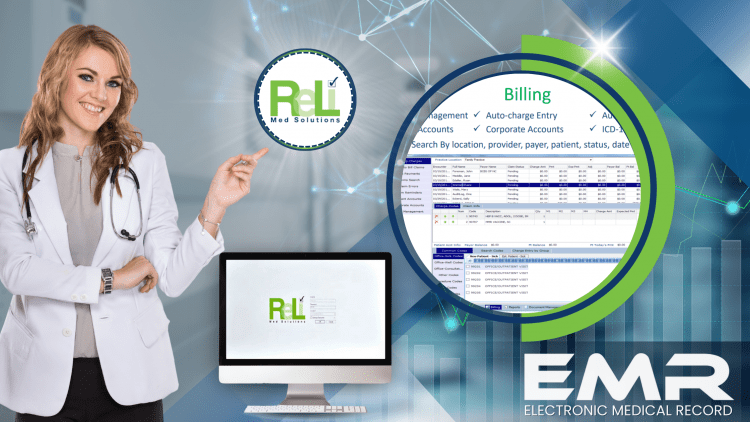Regular Post
Written by RenukreLi
Elevate Patient Care Standards With A Modern EHR Integration System
In today’s health care world, it’s vital to provide good care. But giving this care quickly and correctly could not be easy. Medical practices need the right tools to work faster and smarter. EHR integration is one of the best solutions for this. With it, doctors can connect all patient data in one system. This leads to quicker, better decision-making. Explore how EHR software integration boosts patient care and the benefits it brings to your practice.
How Modern EHR Integration Elevates Patient Care ?

- Seamless Data Sharing: EHR integration helps share patient data easily. This means doctors can access patient data in real-time. They don’t have to wait for physical files or papers. This makes it faster and easier to treat patients with the right info.
- Improved Accuracy: EHR integration helps reduce errors. Without it, patient data might be wrong or missing. With EHR, lab results, prescriptions, and patient history are all connected. This ensures doctors have the right data to make the right choices for treatment.
- Better Coordination of Care: Many patients see more than one doctor. Without proper communication, their care may not be well organized. EHR integration solves this problem. It allows doctors from different areas to share and see the same data. This helps everyone work together and boosts patient care.
- Faster Answer Times: EHR integration makes it easier to access vital patient data. For example, lab results are ready almost at once. Doctors don’t have to wait for reports or make follow-up calls. They can make decisions faster, which means patients get treatment sooner. This makes patients happy because they don’t have to wait.
Key Features Doctors Look For
- ePrescriptions: Doctors need to prescribe medication to patients. Sometimes mistakes happen with prescriptions. But ePrescriptions help solve this problem. Exactly, they let doctors send prescriptions directly to pharmacies. Thus, this makes the process quicker and reduces errors.
- Electronic Lab Interface: EHR integration allows lab results to go straight into the system. This means there’s no need for doctors to write or type the data. Everything is ready faster, and the results are more accurate.
- Interfaces with HIE, Immunization Registries, ACOs, and More: EHR systems connect with other healthcare systems. Exactly, this includes HIE, Immunization Registries, and ACOs. So, this makes sure that doctors can access all the data they need for patient care, regardless of where it comes from.
- Secure Direct Email to Communicate with Other Healthcare Providers: EHR systems offer a safe way for doctors to email each other. They can send patient data directly and securely. This is quicker than using phones or fax machines and ensures better communication between healthcare providers.
- Referral Tracking: EHR systems help track patient referrals. When a doctor refers a patient to a specialist, they can see the progress. This helps ensure patients get the care they need and follow through with their appointments.
Top Problems EHR Integration Solves
- Inconsistent Patient Data: Before EHR integration, patient data was often stored in different places. Some data was on paper, while other data was on different systems. This made it hard for doctors to have a full picture of a patient’s health. EHR integration solves this by putting all patient data in one place. This way, doctors always have complete, accurate data.
- Manual Documentation: Before EHR, doctors had to write everything by hand. This took a lot of time, and mistakes could happen. EHR integration automates the process. This saves time and reduces errors in patient records.
- Difficulty in Communication: Communicating with other doctors used to be slow. Doctors had to use phones, fax machines, or paper. Now, with EHR integration, doctors can send and receive patient data easily and securely. This speeds up communication and boosts care.
- Delayed Treatment: Without EHR integration, doctors may not have fast access to vital patient data. So, this can cause delays in making decisions and providing care. Still, it makes sure that all vital data, like lab results and medical records, is available right away. As a result, this helps doctors make faster decisions and provide quicker treatments.
Steps to Implement EHR Integration

- Check What You Have Now: Before choosing a new EHR system, look at the system you’re using right now. This helps you see what needs to change. ReLi Med Solutions can help you pick the right system for your practice from EHR programs.
- Pick the Right EHR System: There are many EHR systems, but not all of them fit every practice. So, ReLi Med has affordable EMR systems that you can adjust to your practice. These systems make your work easier and faster.
- Make Sure It Works with Other Systems: Your new EHR system should work well with your other systems, like billing and patient portals. ReLi Med offers cloud-based EMR solutions that connect easily with other systems. Also, this helps in practice management.
- Get Ongoing Help: After you start using the EHR system, it needs updates and checks. So, they offer help to keep your system working well. If you have problems, their team is ready to fix them and keep your practice running easily.
By following these steps, you can easily integrate EHR into your practice. Also, ReLi Med Solutions offers customizable, affordable EMR systems and revenue cycle services to help you get better patient care and ability. Thus, contact ReLi Med today to start the process.

